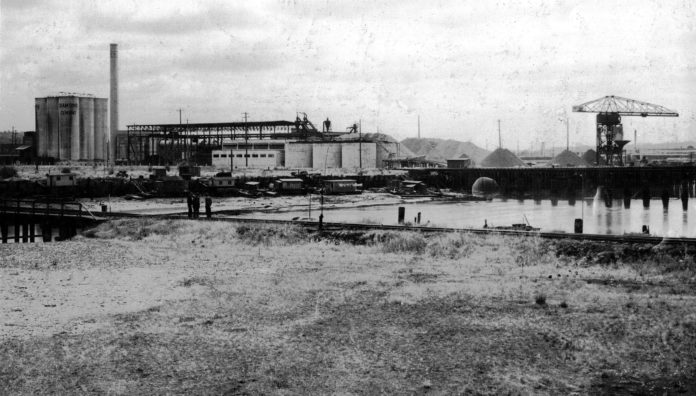Many don’t realize coal was historically the prime fuel used to fire kilns during the manufacture of cement. That process mixes limestone with clays and shales, all fired by coal with coal ash added to create cement – the binding agent in concrete. Shown here is the Pacific Coast Cement Company’s plant located south of Spokane Street on the Duwamish waterway. The photo originally appeared in the July 28, 1935 issue of the Seattle Times, in an article highlighting large area employers. At this time the parent organization, Pacific Coast Company, was a conglomerate with four key subsidiaries. Pacific Coast Steamship Co. transported limestone from Dall Island, just west of the Prince of Wales Island. Pacific Coast Railroad hauled coal from the New Black Diamond mine of a third subsidiary, Pacific Coast Coal Co. In 1928 a new unit, Pacific Coast Cement, was organized to operate this facility.
Part of the company’s logic in building a cement plant was to create demand for its coal. The company’s 1927 annual report noted that because the oil fields of California were displacing coal in so many fuel and heating applications, a decision was made to construct a large cement plant to aid in “the establishment of new coal consumption.” The end product from this facility was marketed as Diamond Cement, the name on one of the silos. The freighter, which transported limestone ore, was christened the “S.S. Diamond Cement” from a naming contest won by Dr. E.W. Pruett of Seattle. This industrial site is still producing cement. It’s now owned by Ash Grove Cement Co. and located at 3801 East Marginal Way. This photo and research comes courtesy of JoAnne Matsumura, an Issaquah historian







